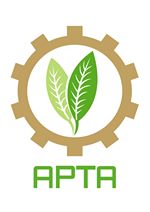The Analysis of Lean Manufacturing in Waste Reduction During Rosin Ester Production at PT XYZ
Naufal Dhiya Hibatullah(1*), Adi Djoko Guritno(2), Arita Dewi Nugrahini(3)
(1) Department of Agroindustrial Technology, Faculty of Agricultural Technology, Universitas Gadjah Mada, Indonesia
(2) Department of Agroindustrial Technology, Faculty of Agricultural Technology, Universitas Gadjah Mada, Indonesia
(3) Department of Agroindustrial Technology, Faculty of Agricultural Technology, Universitas Gadjah Mada, Indonesia
(*) Corresponding Author
Abstract
Waste are commonly generated during the utilization of raw materials. Therefore, they are become important to consider lean manufacturing to achieve the overall business objectives. PT XYZ is a major company in processing pine resin and its derivatives, including gum rosin, turpentine and rosin ester, mainly used as featured commodities. During production, a certain amount of unwanted materials in the form of defect and in the form of work-in-process (WIP) that caused waiting wastes are obtained, particularly at the rosin ester floor. This study aims to identify the waste types and their dominant factors that caused waste occurred in PT XYZ, as well as recommend improvement strategies in boosting production efficiency. Based on the identification results, two dominant wastes occurred in the form of defects and waiting. The defect and scrap portions were prevalent in gum rosin drops, flakes, brushed dust and products that did not fulfill color and size specifications at 63.72 kg/shift that equal to 2,08% scrap rate per shift. Meanwhile, waiting waste refers to work-in-process (WIP) on Oleo Pine Resin (OPR) storage and delay interval for a complete sampling process. The WIP circumstance was also observed at the packaging workstation. Furthermore, repairing tank leaks, allocating special workers to flaking workstations, extending workers’ supervision, combining flake cooling and transportation processes, procuring cooling conveyors and increasing the quantity of esterification reactors were recommendations for optimum production. These proposed activities have the capacity to enhance the process cycle efficiency (PCE) value from 4.65 to 6.34%.
Keywords
Full Text:
PDFReferences
Aprilia, I. S., Rachmadita, R. N., and Rachman, F. 2018. Analisis Waste Menggunakan Value Stream Analysis Tools (VALSAT) pada Proses Produksi Klip (Studi Kasus di PT Indoprima Gemilang Engineering). Jurnal Teknik Desain dan Manufaktur, Volume 1 (1): 400-406.
Gasperz, V. 2007. Lean Six Sigma for Manufacturing and Services Industries– Strategi Dramatik Reduksi Cacat/Kesalahan, Biaya, Inventori, dan Lead Time dalam Waktu kurang dari Enam Bulan. Jakarta: Gramedia Pustaka Utama.
Hasanah, T., Wulansari, T., Putra, T., and Fauzi, M. 2020. Penerapan Lean Manufacturing dengan Metode Takt Time dan FMEA untuk Mengidentifikasi Waste pada Proses Produksi Steril di Industri Farmasi. Jurnal Rekayasa Sistem dan Industri, Volume 7 (2): 88—94. https://doi.org/10.25124/jrsi.v7i2.435
Heizer, J., and Render, B. 2009. Manajemen Operasi. Jakarta: Salemba Empat.
Hines, P., and Rich, N. 1997. The Seven Value Stream Mapping Tools. International Journal of Operation & Production Management, Volume 17 (1): 46—64. https://doi.org/10.1108/01443579710157989
Lee, Quarterman, and Snyder, B. 2007. The Strategies Guide to Value Stream Process Mapping. Canada: Enna Products Corporation.
Nugroho, A., Ainuri, M. and Khuriyati, N. 2015. Reduksi Pemborosan untuk Perbaikan Value Stream Produksi “Mi Lethek” Menggunakan Pendekatan Lean Manufacturing. Jurnal Agritech, Volume 35 (2): 205-211. https://doi.org/10.22146/agritech.9408
Rawabdeh, I. A. 2005. A Model for The Assessment of Waste in Job Shop Environment. International Journal of Operations & Production Management, Volume 25 (8): 800-822. https://doi.org/10.1108/01443570510608619
Wilson, L. 2010. How to Implement Lean Manufacturing. New York: The McGraw-Hill Companies, Inc.
Article Metrics
Refbacks
- There are currently no refbacks.
Copyright (c) 2022 Naufal Dhiya Hibatullah, Adi Djoko Guritno, Arita Dewi Nugrahini

This work is licensed under a Creative Commons Attribution-ShareAlike 4.0 International License.









